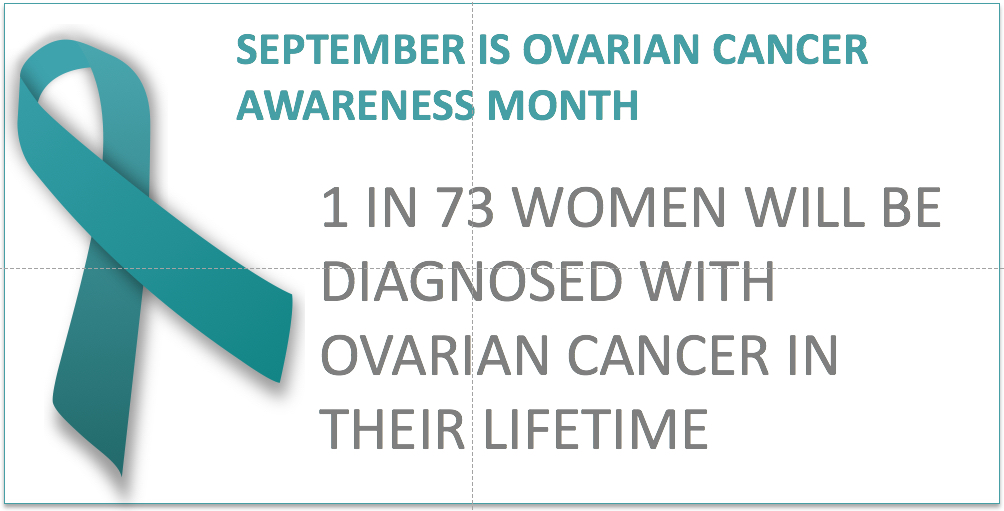 MonkeyBusiness Images/PhotoSpin
MonkeyBusiness Images/PhotoSpin
Sponsored by: MyOCJourney
The natural bond between women is like no other. We understand one another, we empathize with each other and we confide in each other. By joining together, we have the power to become one voice for all women.
May 8, 2015, is World Ovarian Cancer Day, and was started in 2013 by an international group of representatives from patient organizations working in ovarian cancer. The American Cancer Society estimates 21,290 new ovarian cancer diagnoses in the U.S., as well as 14,180 deaths from the disease this year. By recognizing the unbreakable bond all women share, we can raise awareness about ovarian cancer, in addition to its signs, symptoms and risk factors.
No one wants to hear that they have been diagnosed with ovarian cancer, but we can support and help friends, family and loved ones through the challenges. Help spread awareness by sharing these five facts about ovarian cancer with five women in your life, while encouraging them to “Connect 5.”
1) It can happen to anyone
Some women can have a higher risk of developing ovarian cancer due to factors, such as genetic makeup or family history. While all women are at risk of developing ovarian cancer, women who have inherited mutations of the genes BRCA1 and BRCA2 can have a higher risk of developing ovarian cancer. According to the American Cancer Society, the risk of ovarian cancer for women with the BRCA1 mutation is estimated between 35-70 percent, while the risk for women with the BRCA2 mutation is estimated between 10-30 percent by age 70.
2) Know the warning signs and track any symptoms
The American Cancer Society lists the following as the most common signs of ovarian cancer:
• Bloating
• Pain in the abdomen or pelvis
• Trouble eating or feeling full quickly
• Needing to urinate with more urgency or frequency
Often, ovarian cancer is diagnosed at an advanced stage because women delay checking with their doctor, or associate their symptoms with their menstrual cycle or menopause. Keeping track of your symptoms and their frequency can be helpful in letting you know when you should seek help.
3) Early diagnosis can improve your chance of survival
Being aware of some of the warning signs enables you to address any concerns with your doctor.
4) Consider genetic testing
Simply having a cervical smear test is not enough to check for ovarian cancer. A cervical smear test will only check for precancerous cells in the cervix. If you do have a family history of ovarian cancer or BRCA1 and BRCA2 mutations, you may want to consider testing for the genetic mutations. However, even if there is no family history, BRCA testing can help determine a treatment path. When screening for BRCA1 or BRCA2, health care providers assess a variety of family history factors including, breast cancer before the age of 50, multiple cases of breast cancer, both ovarian and breast cancers in the same woman or family, Ashkenazi Jewish ethnicity, and at least two primary types of BRCA1 or BRCA2-related cancers in a single family member, the National Cancer Institute said.
5) Be informed
Women hold the power to educate themselves about their health, and staying informed about symptoms, risk factors and treatments for ovarian cancer can make a huge difference in the fight against the disease. There are resources available to learn more about ovarian cancer at MyOCJourney.com.
About World Ovarian Cancer Day
An international group of representatives from patient organizations working in ovarian cancer came together and observed the first World Ovarian Cancer Day in 2013. Since then, the day has helped build solidarity in the fight against the disease. Through the help of ovarian cancer organizations around the world, communities are being educated about the symptoms of ovarian cancer.
World Ovarian Cancer Day has set a movement to help close the gaps that exist in understanding and managing the disease.
Sources:
BRCA1 and BRCA2: Cancer Risk and Genetic Testing. National Cancer Institute at the National Institutes of Health. Retrieved April 17, 2015. http://www.cancer.gov/cancertopics/causes-prevention/genetics/brca-fact-...
Cancer Facts & Figures 2015. American Cancer Society. Retrieved April 17, 2015. http://www.cancer.org/acs/groups/content/@editorial/documents/document/a...
Signs and symptoms of ovarian cancer. American Cancer Society. Retrieved April 17, 2015. http://www.cancer.org/cancer/ovariancancer/detailedguide/ovarian-cancer-...
Survival Rates For Ovarian Cancer, By Stage. American Cancer Society. Retrieved April 17, 2015. http://www.cancer.org/cancer/ovariancancer/detailedguide/ovarian-cancer-...
What are the risk factors for ovarian cancer? American Cancer Society. Retrieved April 24, 2015. http://www.cancer.org/cancer/ovariancancer/detailedguide/ovarian-cancer-...
Reviewed April 21, 2015
by Michele Blacksberg RN
Edited by Jody Smith





Add a CommentComments
There are no comments yet. Be the first one and get the conversation started!